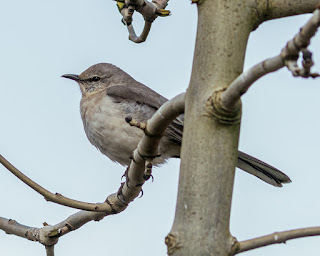I haven't seen Colin since the early part of October. Various things like family get togethers, weather, a really bad booster reaction in my case and other commitments have stopped us getting out. The one thing we have wanted to do is go up to Lancashire for the fourth recorded Belted Kingfisher. It turned up at outside a reserve called Brockholes near Preston in the middle of November. However it was never reliable, only seen on a few days and getting to the viewing spot on the river involved an extremely precarious descent down a reputedly 200' wooded slope, which being Lancashire was rather wet and muddy. There were stories of many stories of birders slipping down the cliff of doom, falling in the river and apparently on one occasion a mountain rescue team was needed.
After it was last seen, it was hoped that it would show up somewhere a bit more accessible and there were a couple of reports elsewhere and prior to Christmas was finally pinned down to a river near a place called Roach Bridge and the local farmer was allowing access to the field overlooking the river for a suitable fee. Tony Hukin told me he had gone on the 22nd, and viewing was good if you had the right gap in the trees. We planned to go up on the Monday, but there was only one brief sighting on Boxing Day so we held back. Typically it was then seen all day, so we went on Tuesday.
We arrived at the designated parking spot just before 8am to find it full up and had to use a pull in a bit further up the road. It was raining, the light was abysmal but at least it was warm. We had been warned that it was like the Somme, and the access footpath resembled a rocky muddy stream, and the climb up was a bit iffy, but the field was a lot worse. A naturally wet boggy grazing meadow, hundreds of visitors had really churned it up into a more than ankle deep quagmire, and the viewing area was a muddy slope overlooking the river, and more than one person fell while I was there.
It was a bit challenging with the light and while the odd duck was seen and recognised it took some time before someone reported the Kingfisher. I was in the wrong place, and directions hazy but was told it was obscured by a rather distinctive branch just above the water, and I could see a moving shape. Suddenly it flew across the river splashed down near a twiggy bush and returned, repeating this a couple of times. Not much more than a silhouette, the rain. spattered eyepiece and glasses not helping, but at least it was just about recognisable.
That was it for a bit. I though I had it a bit higher up in the tree for a while, and so I moved to get try and get a better angle and met up with Ian Bennell and his crew. One of the nearby birders had it in his scope so we all grabbed a quick view-it was further back than expected, being in a different tree, but the light wasn't bad. It was facing us, the white belly was divided by a distinct chest band and the slate blue upper-parts contrasted nicely. At least we could now say we had really seen it. I couldn't locate it for sure in my bins largely because I was never sure I was looking in the right place. Colin did see it fly further away along the river and then departed in order to dry off. I hung around for a while and it was then seen briefly a long way off by the river bend, and then disappeared around the bend. After I left, Ian did get a very distant digiscoped shot when it was perched near a pool around the bend.
The Kingfisher was my 5th lifer of the year-with the Mockingbird, Albatross, Green Warbler and Long Toed Stint it has been a really good one for new birds.







































